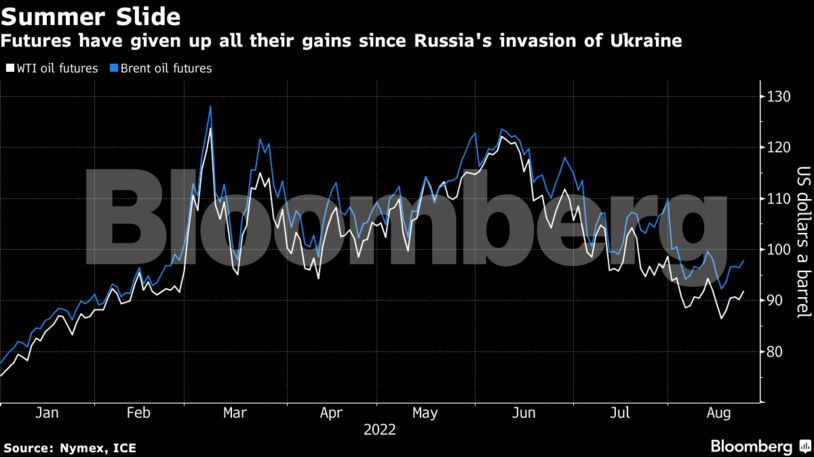Oil rose near $92 a barrel in New York after Saudi Arabia said OPEC+ may be forced to cut production to stabilize a volatile market.
“Extreme” volatility and a lack of liquidity mean futures are increasingly disconnected from fundamentals, Saudi Oil Minister Prince Abdulaziz bin Salman told Bloomberg. That put a floor under prices in a bumpy session on Monday and prompted some Asian refiners to voice concerns about market uncertainty.
Oil has seen a tumultuous period of trading since Russia’s invasion of Ukraine in late February upended flows. OPEC+ has reversed all of the output cuts made during the pandemic, but Prince Abdulaziz suggested the cartel may need to tighten production again when it meets next month to discuss supply targets.

“Whether cutting OPEC or OPEC+ output after September is justified is debatable,” said Tamas Varga, an analyst at PVM Oil Associates. “Of course, the picture will be different if a reduction in output will be necessitated by Iran’s potential comeback, which is anything but a dead cert at this moment.”
Futures have lost about a quarter of their value since early June as escalating fears of an economic slowdown threaten the demand outlook. The potential revival of a nuclear deal with Iran, which could lead to a jump in crude exports from the OPEC producer, has also added to the bearish sentiment. Yet market activity has dwindled, with open interest falling to the lowest since early 2015.
| Prices: |
|---|
|
Oil’s steady slide has also filtered through to the pump. In the US, gasoline prices are on their longest run of declines since 2015, potentially easing some of the inflationary pressures on the country’s economy. In Europe, figures released Tuesday showed economic activity shrinking for a second month.
Share This:




 CDN NEWS |
CDN NEWS |  US NEWS
US NEWS 



























